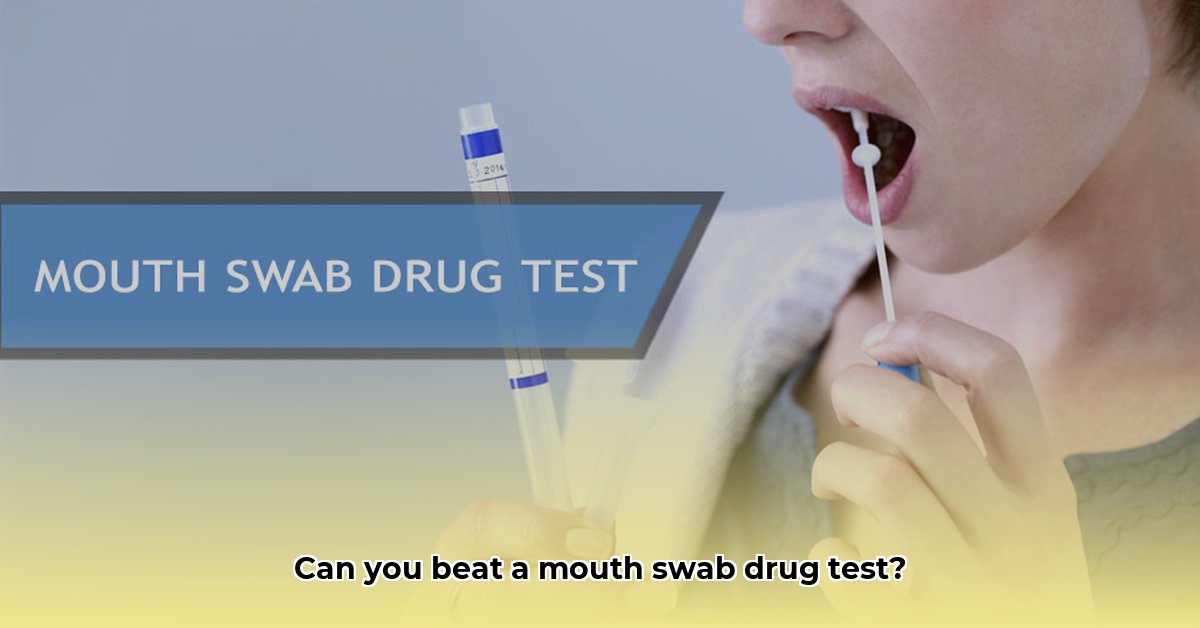This guide provides a comprehensive overview of oral swab drug tests, including how they work, what they detect, and potential implications. It also explores common strategies people consider when facing these tests, emphasizing harm reduction and responsible decision-making. It’s essential to approach this topic with caution and prioritize honesty and safety.
Understanding Oral Swab Drug Tests
Oral swab tests, also known as saliva or mouth swab drug tests, detect recent drug use by analyzing saliva for drug metabolites—byproducts of drug metabolism. These tests are popular due to their ease of administration, quick results, and ability to detect recent drug use, typically within the past few days.
The Science Behind the Test
After drug use, metabolites enter your saliva through various pathways. The test identifies these metabolites, not the drugs themselves. Think of it like detecting the aroma of freshly baked cookies—you’re not detecting the ingredients themselves, but the byproducts of the baking process.
What Drugs Are Detected?
Oral fluid tests commonly screen for:
- Marijuana (THC)
- Cocaine
- Opiates (e.g., heroin, morphine)
- Amphetamines (e.g., methamphetamine, MDMA)
- Benzodiazepines (e.g., Xanax, Valium)
- PCP
Drug Detection Windows: How Long Do Drugs Stay in Saliva?
Detection windows vary based on factors like individual metabolism, dosage, frequency of use, and the specific drug. These are estimates, and actual detection times can vary:
| Drug | Approximate Detection Time in Saliva |
|---|---|
| Alcohol | 10-24 hours |
| Marijuana (THC) | 1-3 days (up to 30 days with heavy, chronic use) |
| Barbiturates | Up to 3 days |
| Benzodiazepines | Varies widely (see table in previous section) |
| Opioids | Varies widely (see table in previous section) |
| Amphetamines | ~48 hours |
| Cocaine | ~24 hours |
| PCP | ~72 hours |
| Methamphetamine | ~4 days |
| Other Prescription Drugs | Varies (see table in previous section) |
It’s important to note that detection windows can be longer in individuals with slower metabolisms or chronic users.
Strategies to Consider (Besides Abstinence)
While abstinence is the most reliable way to pass a drug test, some strategies might influence results. It’s crucial to approach these with realistic expectations and prioritize health and safety:
Hydration and Oral Hygiene
Drinking plenty of water and maintaining good oral hygiene are generally healthy practices. While they might contribute to slightly diluting saliva, the impact on test results is likely minimal.
Dietary Adjustments
Some theories suggest that altering fat intake could influence THC elimination due to its fat-soluble nature. However, scientific evidence supporting this is limited.
Quick Fixes: Fact vs. Fiction
Many “quick fixes” circulate online, but their effectiveness is questionable and potentially risky:
- Sour Candies/Chewing Gum: These stimulate saliva production, which could lead to slight dilution, but the effect is probably negligible.
- Mouthwash/Hydrogen Peroxide: While some believe these cleanse the mouth, they can be detected as adulterants, potentially invalidating the test. Hydrogen peroxide can also be harmful if ingested.
- Detox Products: The efficacy of specialized detox products is often unsubstantiated, and they are generally not recommended.
Important: None of these methods guarantee a negative test result, and some may even be harmful. Abstinence is the only surefire approach.
What to Expect During the Test
The procedure is straightforward:
- Preparation: You’ll likely be asked to remove anything from your mouth (gum, food, etc.).
- Swabbing: A collector rubs a swab against the inside of your cheek to collect saliva.
- Analysis: The swab is analyzed either on-site or sent to a lab.
- Results: Results are usually available within minutes for on-site tests or a few days for lab tests.
Legal and Ethical Considerations
Attempting to cheat a drug test can have serious legal consequences, including job loss or criminal charges. Honesty is always the best approach.
Getting Help with Substance Use
If you’re struggling with substance use, resources are available:
- SAMHSA National Helpline: https://www.samhsa.gov/find-help/national-helpline
Remember, seeking help is a sign of strength, and recovery is possible. This information is for educational purposes only and does not constitute legal or medical advice. Consult with a qualified professional for personalized guidance.
- Shop Bento Box for Sale To Find Your Ideal Lunch Container - December 6, 2025
- Lunch Box That Fits Bento Box Neatly for Daily Use - December 5, 2025
- Japanese Lunch Bag Does Double Duty as Bento Carrier and Tote - December 4, 2025










